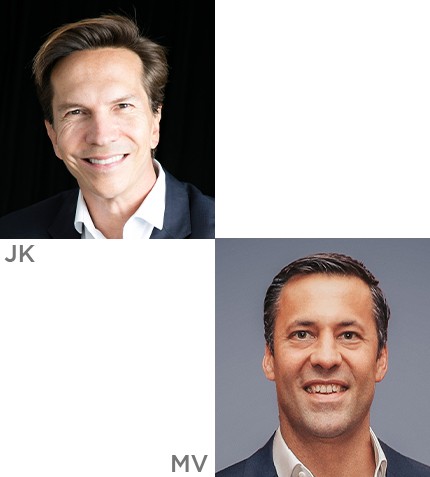
"Our primary objective is to pivot to areas that our clients are focusing on, such as digitalization, ESG and supply chain management."
Arda Ural
PARTNER & EY AMERICAS INDUSTRY MARKETS LEADER, HEALTH SCIENCES AND WELLNESS
What role has digitization played for EY in the past year?
Our business has seen a positive uplift as we focused on digital initiatives to continue supporting our clients in the life sciences sector. The pandemic has shed light on the importance of digitization and AI, and EY’s Smart Reviewer process has received significantly more attention over the past months. This technology solution leverages AI and ML algorithms to automate key activities in the promotional materials' review process. It allows for more efficiency and reliability, ultimately mitigating the challenge of human error and allowing better quality information to enter the market faster, while reducing risks and cutting costs. The solution accelerates the products of our biopharma clients to reach their patients faster.
2021 was a year defined by uncertainty, but EY experienced solid growth and we have a positive outlook for the future. Our primary objective is to pivot to areas that our clients are focusing on, such as digitalization, ESG and supply chain management.
With a change in government administration, how has the regulatory landscape evolved?
The life sciences industry is keeping its eye on H.R.5376, a legislation related to drug-pricing that will require producers and pharma companies to behave differently. This regulation as part of the Build Back Better Act will require our clients to double down on value-based contracting and outcomes-based pricing. They will not only assign a price to a pharmaceutical product but will also commit to an outcome for which they can charge differently.
There is attention on how the Federal Trade Commission (FTC) in the US will regulate M&A activity. With a focus on protecting the public against anti-competitive behavior and unfair trade practices, the FTC can require a merging company to divest assets and rights to refrain the new company from having a monopoly position in the market.
Additionally, the FDA has implemented a draft reporting program so that certain key quality metrics are reported to the agency in an effort to ensure continual improvement of product and process quality in the pharmaceutical manufacturing industry. Given the complexity of pharmaceutical businesses, the supply chain cannot afford one misstep, and consequently the product and process quality have become even more important.
How has the Omicron wave altered the IPO and special purpose acquisition company (SPAC) landscape and what is the trajectory we can expect to see in 2022?
IPOs in 2021 were at an all-time high, but factors causing uncertainty such as potentially increased interest rates, geopolitical tensions, inflation risks and the possible emergence of new COVID-19 variants, may hinder economic recovery and play a role in the financing environment in2022.
IPO candidates should remain flexible with a plan B in place to meet financing needs in case the IPO timetable is delayed. SPACs are currently in a more dire state than in 2021 due to the decreased availability of late-stage assets and the window for IPOs starting to close. Companies need to start prioritising their pipelines to put their next milestone in sight and avoid dilution. I believe that companies without a current late-stage asset will experience choppy waters in this uncertain environment.
Related to the topic of an aging population, what innovations are entering the market?
Population age continues to feed what diseases pharmaceutical companies need to target, and oncology is by far the most common disease area of focus for pharma. In addition to oncology, cell and gene therapies are starting to receive significant focus as a way to address patient and population needs.
Which of EY’s services are in most demand within the life sciences sector?
EY continues to focus on addressing business challenges enabled by technology-inspired solutions, and especially today, digitalization is extremely important to our clients. ESG has also become a massive trend that is here to stay as investors and stakeholders want better ESG disclosures to help them understand more about how a company performs. Consumers also want to understand the impact their choices are having on the world, and employees seek to know whether their company is driving greater equality, empowerment, better working conditions and safer and more sustainable communities. EY assists our clients in their ESG goals through nonfinancial reporting advisory and assurance, climate-related reporting, sustainability and supply chain advisory, and outcomes measurement.










